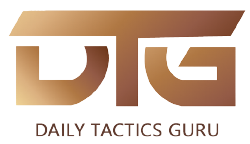Everything new on the market is a huge deal. Whether you offer a freshly enhanced service or a tangible product, it is possible that you start from the difference between success and failure.
No sophisticated marketing can offset the lack of appropriate thinking of a bid. However, a superior product, which might affect your clients, is definitely at risk without the support of a well-designed launch strategy.
Whether you are a graphic designing agency or a B2B business you need a plan before launching your product in the market. It begins with product definition and internal knowledge, then proceeds through the procedures that bring your product to your public. Along the route, you will find out how marketing automation and content marketing may be integrated into the basic components of launching.
Why does Product Launch fail?
A rapid search by Google indicates that failure is not the exception, but the norm. Data on the percentage of launches of products that fail range between 75-90%.
The launch fails for numerous reasons. Maybe the firm was trying to satisfy a demand that did not yet exist or that did not educate the market about the need for its unique product. Perhaps it was just a misunderstood notion or a faulty interpretation of business and consumer trends.
Digital marketing agency or freelancers know how to develop their own marketing strategies to assist other businesses. They offer you an official plan for the launch of a new product, who is the target audience, a sales strategy, and a marketing plan. But in particular, the manufacturing and industrial sectors, each product, industry, and market are distinctive.
Here a few tips you can use to understand the launch of your product.
Do Research to Offer a Better Product
The foundations of a good product are based on a successful launch, as already discussed.
Rather, work backward instead of starting with a concept for a new product or feature and trying to identify a market for it. First, understand the wants of your consumers and create items to meet them.
Look at consumer comments on existing items and see what features and advantages might call for updates or new items. Understand your suffering and find your product’s true problem.
You should make sure that you do not conclude with new bells and whistles that offer no further benefits when offering characteristics that complement your primary product
Product Objects and Targets
Fix product objectives and targets. Ask questions like for whom is this product, what is it doing?
Test if you have done decent work by starting it internally first to explain your product. It is doubtful that you will be able to help your clients if you cannot sell your concept effectively enough to your colleagues and the sales team to exit and to buy in.
Most companies wish to make as many sales as possible in the shortest feasible period when introducing a new product or service. Taking time to reflect on what else you want to do can assist shape the plan for product launch and give concrete signs of success.
Focus on Target Audience
Don’t all start at once to everybody. To expose your product over time to additional people, you need to start by identifying an initial target public and a marketing plan. This gives you the chance to change your message and provide your product greater value. It examines and confirms your assumptions and answers to the essential question who, what, and why.
Within your existing user base or designated audience, your target audience may be seen. They could be early adopters, people you identified as interested, and you invested in finding new ideas. You could have had great encounters with your firm or with current brand evangelists that would be more inclined to spread your message word by word of mouth.
Exceptional Customer Experience
The next step is to build all your content for the launch path that you have established. To guarantee a smooth client experience at all levels coordinated with Sales Team, and with internal stakeholders.
All assets – such as landing pages, lead shot, FAQ, sales text, PowerPoint decks, demo scripts, training materials, and blog entries – should be aligned up when you click on the launch button. All of them should be aligned up.
Conclusion
This is not a one-size solution to be launched, like any other framework. Your audience may not benefit from tactics that work for other businesses. But taking a staged approach and focusing on tracking can enable you to construct and test procedures that generate a tailored launch solution that works best for you and increases your chances of success.
